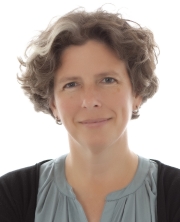Economic inequality is growing and this matters for health. Occupy Wall Street, the protest movement launched in 2011, made the slogan “we are the 99%” familiar. Piketty’s 2013 Capital in the 21st Century showed us the science behind the slogan, breaking down the the picture of both wealth and income for “the 50%” (think precarious service workers), “the 40%” (skilled white and blue collar workers), “the 10%” (professionals with secure employment, entrepreneurs, and those who live from their own wealth—“capitalists” in the classic sense)—and for orders of magnitude above that—the 1%, the 0.1% and so on. Together with collaborators in inequality studies around the world, Piketty has assembled impressive documentation and attempted a grand structural explanation for the phenomena we see around ourselves every day: the entanglement of our own lives and the fate of the economy with household debt and inflated mortgages; the growth of an economic super-elite while prospects for the middle class and the “precariat” stagnate or worsen; the increasing importance of inheritance in shaping life opportunity. In the United States, inequalities of income are reaching heights not seen since the 1920s, with the UK and Canada joining the US in pulling away from Europe in this trend).
Structurally, the issues Piketty highlights go beyond income inequality. He shines a light on the importance and growth of accumulated wealth. The economy now contains more wealth—presented in accounts as “national wealth” but concentrated overwhelmingly in private hands—than it did before the key progressive policies eroded and redistributed wealth, and the sheer force of two world wars destroyed it, in the 20th century. What many of us grew up with as a “normal” world of opportunity was an historical anomaly—the only generation (post WW II) where “the living were wealthier than the dead”—where the power of inherited wealth had been so moderated that the living could in effect fashion the social contract anew, with generous social state benefits and social mobility.
My review essay in the current issue of IJFAB summarizes Piketty for you, comments on some of the key criticisms that have been raised—and then raises questions about what this emerging world means for issues of concern to bioethics. What does it mean for women and reproductive rights when inheritance once again becomes a substantial conduit for wealth? When the “war on cancer” took off in the 70s, one key step advocates took was to capture the attention of government, where the real money was—what does it mean for research ethics and global health when private foundations can easily outstrip government spending? This question doesn’t arise just at the global level—at the local level, charities, educational institutions, and nonprofits are increasingly beholden to large donors. While Piketty’s criticism of the austerity response to the financial crisis is welcome, what’s missing from Piketty’s grand narrative is any kind of global accounting for care labour, which is the resource governments are drawing on when they cut back the social state.
Piketty means to start a social conversation about what egalitarianism means in a world dominated by wealth. We haven’t had such a conversation since the communist states tried out their solution to the puzzle: putting all capital in the hands of the state. For most of history the story about wealth for the bottom 50% has been the same: it owns very little (5% of wealth at the most) or it owes more than it owns; the next 40% are the only folks who gained in the 20th century, now owning real estate and pensions—but our lives built around these assets are increasingly precarious; the share of the 1% is beginning to rise (at whose expense?) and the share of the 0.1% in wealth in the US has reached the levels last seen in the 1920s (Saez & Zucman 2014). Here the situation historically was reversed: Europe was the world of old accumulated and concentrated wealth, while North America enjoyed a broader distribution of wealth up until the 1950s. Piketty ascribes this to our youth as a society, but others might note it has something to do with the largest seizure of capital in the history of the planet—seizure of lands from the inhabitants of the continent. Piketty fosters this conversation by talking about the great novelists of the 19th century, the last era where pursuing inheritance was the way to make your mark in the world.
This conversation belongs in bioethics too. We focus a lot on economic inequality and health, but we need to think about the difference between income and wealth—what does wealth do for people, distinct from a good wage? And what does debt do to people? And specifically in relation to health, and in relation to our power or disempowerment as we encounter the institutions of medicine and health care? Many of our conversations about commodification and the body turn on an analogy between e.g. paid research participation, surrogate labour, incentivized organ donation and risky labour. Piketty focuses for us that the choice isn’t between selling your kidney and working in the oil fields. It’s between selling your kidney and nothing, for those in the 50% who have no capital to turn to as an alternative. It’s quite predictable that some (like me) will see this as strengthening the case for calling this exploitation of the poor, while others will undoubtedly make the opposite argument.
Piketty’s 600-page Capital in the 21st Century is a page-turner—really, it is—but if you don’t want to read that much, he has a shorter book, more of an introduction to the field, just out this summer, The Economics of Inequality. As for what can be done about this, you can turn to Piketty’s mentor, Antony Atkinson, who has just released a book of policy proposals, Inequality: What Can Be Done. And for the impact of inequality in health, and what can be done about that, Michael Marmot’s The Health Gap: Challenge of an Unequal World is out now.

Comments on this entry are closed.